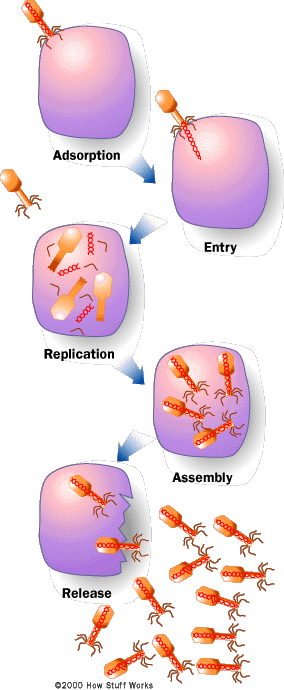














Viruses

WHAT ARE VIRUSES?
HOW DO THEY WORK?
Viruses are small particles that consists of nucleic acid, a coat of protein, and a lipid membrane. They are basically a tiny conglomeration of genetic material, either DNA or RNA. They vary in shapes as some can look like spiders and others like popcorn. Because of the fact that they cannot live without a host, viruses are considered both living and non-living.
ARE THERE TREATMENTS FOR THESE DISEASES?
A virus invades and harms a host by what is known as the lytic cycle. The virus first attaches to a host cell, then injects genetic materials, and finally manipulates the cell's DNA to make copies of itself. Once complete, the new viruses burst outs of the cell and eliminates it. (T-47)
Cold, flus, and AIDS are the most common illnesses that derives from viruses. (T-48)

WHAT DO THEY CAUSE?
There are no treatments for viral infections, though vaccinations have been created to prevent them before it happens. The immune system is the only real treatment that can be relied on to stop viruses. (T-49)

